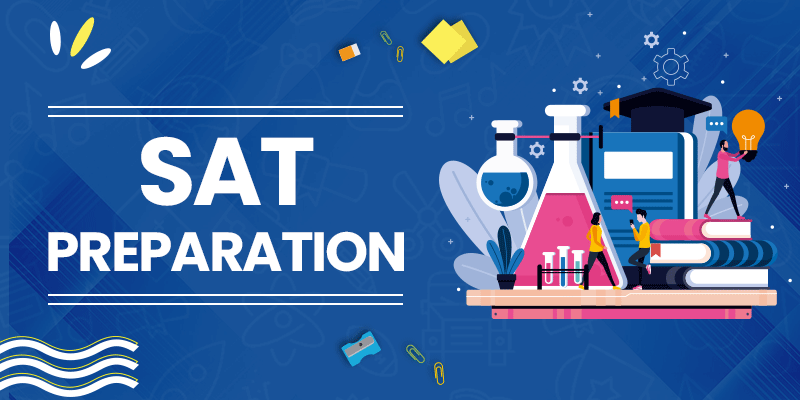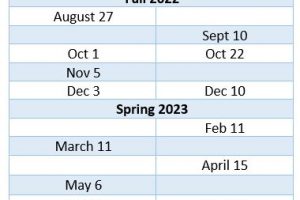The SAT is a standardized test widely used for college admissions in the United States. With strong competition for admission at selective universities, scoring well on the SAT can provide a competitive edge. Proper preparation helps maximize SAT performance.
This article provides an overview of the SAT, tips for creating an effective study plan, and guidance on resources to aid preparation.
Understanding the SAT Format
Knowing the SAT’s design is key to strategic studying. The SAT consists of:
- Reading – 52 multiple choice questions testing comprehension of 5 passages.
- Writing – 44 multiple choice questions on rhetorical skills, plus an optional 50-minute essay.
- Math – 58 multiple choice and grid-in response questions on arithmetic, algebra, geometry/trigonometry, and data analysis.
- No penalty for guessing – Students should answer every question, as unanswered questions are automatically wrong.
The SAT takes 3 hours, plus 50 minutes for the essay. All questions are scored equally. Understanding this format allows focusing study properly.
When to Start Preparing
Ideally, students begin structured SAT prep at least 3-6 months before taking the actual test. This provides time to build skills in a strategic progression versus last-minute cramming.
During 10th grade is a good time to take a timed practice test to gain familiarity and identify target score goals and weak areas. Formal prep often ramps up 11th grade year.
According to Princeton Review founder John Katzman, “Students maximize scores by steadily prepping and removing the mystique of the SAT over time.” Pacing prevents pressure.
Effective Study Habits
Along with prep materials, disciplined habits ensure SAT success. Key tips:
- Set a prep schedule – Block regular times for studying questions, taking practice tests, reviewing errors, etc. Consistency is key.
- Remove distractions and set goals for each study session to remain focused.
- Vary topics instead of intensively drilling one section to build overall skills. Circle back to reinforce weak areas.
- Simulate test day conditions – Practice timed sections and take full practice tests regularly.
- Thoroughly analyze errors – Note why you selected wrong answers and how to avoid the mistake next time.
Education expert Laurence Steinberg notes disciplined study habits distinguish high-scoring students. Avoid simply going through the motions.
Practice, Practice, Practice
There is no substitute for diligent practice when prepping for standardized tests. Key techniques include:
- Take multiple timed practice tests – Mimic actual test conditions. Use official College Board SATs.
- Do targeted practice with flashcards for vocabulary and formulas.
- Drill essential math concepts and grammar rules through focused workbooks or online exercises.
- Attempt challenging questions – Don’t just do easy problems. Stretch skills. Review what you got wrong.
- Retake practice tests – Use errors to identify weak spots for more focused practice.
As SAT perfect scorer Shaan Patel advises, “Practice under timed conditions prevents surprises and builds endurance.” Comfort with the format minimizes stress.
Ready-to-Use Study Resources
Students can leverage a wealth of prep resources:
- Official test questions – Doing College Board’s Official SAT Practice Tests is critical. Get familiar with the format and rigor.
- High-quality books and classes – Well-regarded programs from The Princeton Review, Kaplan, and local tutors provide structured skill building.
- Online prep – Apps and websites like Khan Academy offer affordable on-demand practice and video explanations.
- Flashcards – Pre-made SAT vocabulary flashcards help master challenging words. Create your own for formulas.
- Practice workbooks – These reinforce strategies and offer timed drills for each test section.
Multipronged preparation provides comprehensive practice to conquer the SAT. Invest time determining resources that best fit needs.
Developing Key Competencies
To maximize scores, students should hone these core skills:
Reading
- Close reading and annotation tactics
- Analyzing text structure and rhetorical devices
- Synthesizing central ideas and details
- Building vocabulary
Writing
- Command of grammar rules and conventions
- Logical organization and effective style
- Composing concise, persuasive essays
Math
- Fluency in arithmetic, algebra, geometry concepts
- Applying principles accurately under time pressure
- Interpreting charts, graphs, and data trends
Acing Test Day
Success on test day requires:
- Visiting the test center beforehand to reduce surprises
- Preparing required documents like ID, registration ticket, calculator
- Arriving early to get settled with minimal rushing
- Having a good breakfast and hydrating well
- Bringing snacks/water to maintain energy during breaks
- Using relaxation techniques to reduce test anxiety
- Avoiding cramming at the last minute to stay fresh
“Solid preparation along with composure on test day allows students’ full abilities to shine through,” affirms education expert Erica Meltzer.
With smart preparation and persistence, students can master the SAT. Using resources efficiently, practicing rigorously, and staying confident sets students up for their best possible score to open college doors.


















This is why i’d rather have a green and red scarf. Next to keeping my scarfs in-house I keep them in separate house. Unfortunately I can wear them only when its winter – summer is bit warm for scarfs 🙂
I hope that you agree with me
I agree with you – I also keep my scarves in one special place. I wear them only when its winter and winters here can be vary vary cold.
I change my set of scarves every year. Sometimes it costs me a lot of money but when scarves are in question I simply just don’t care.
I will share this article on all my social networks – you can follow me there Patrick.